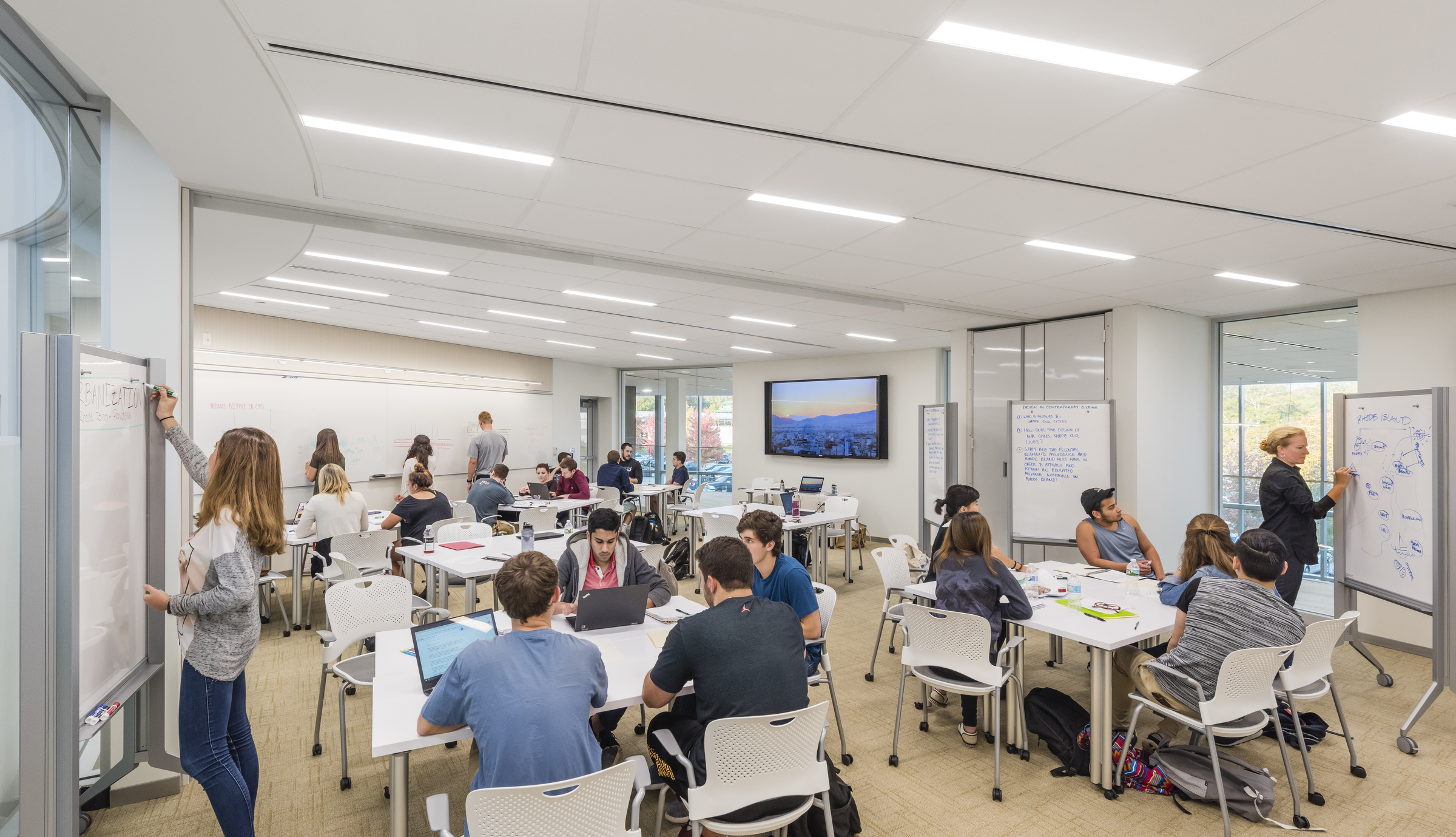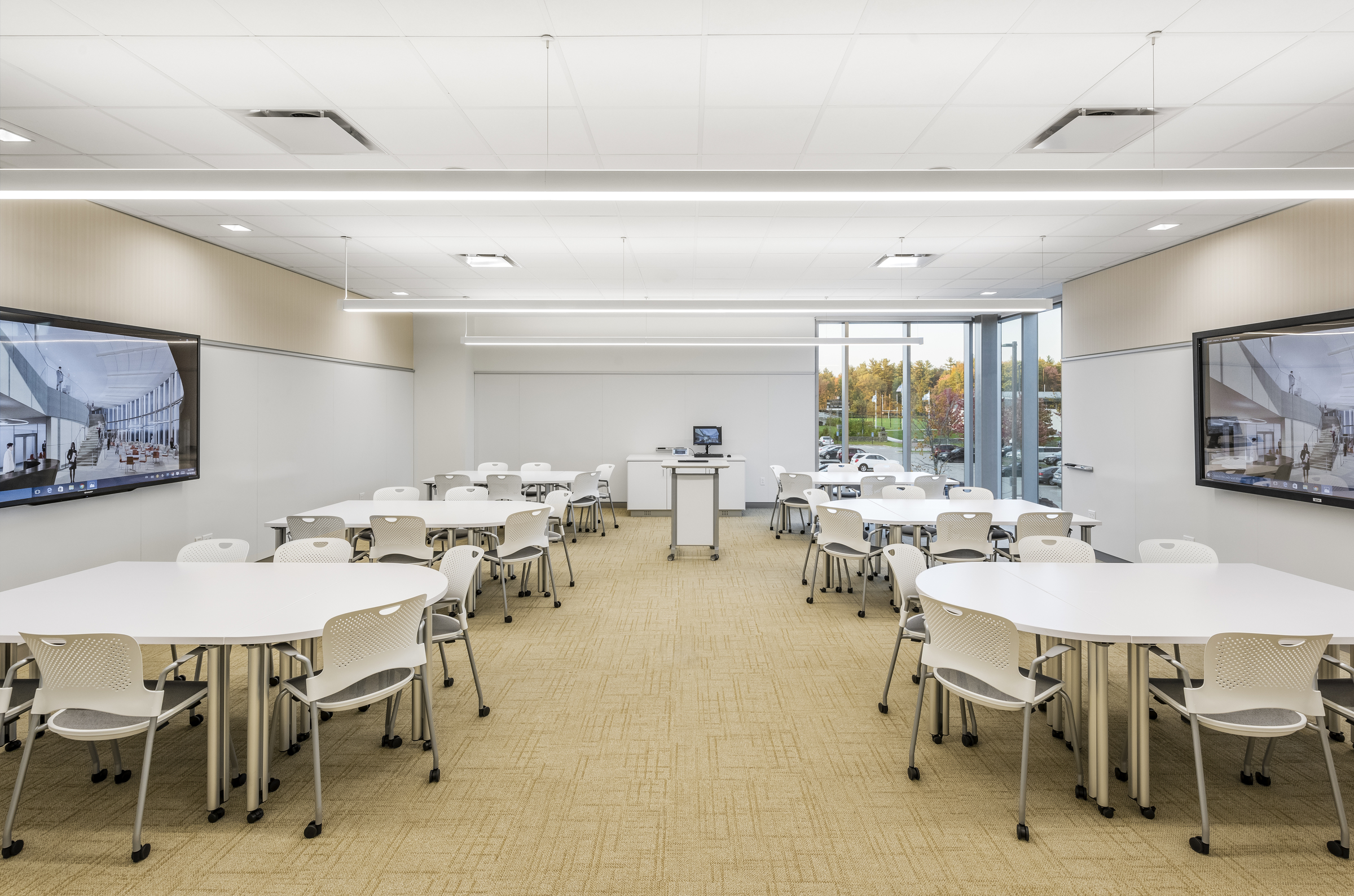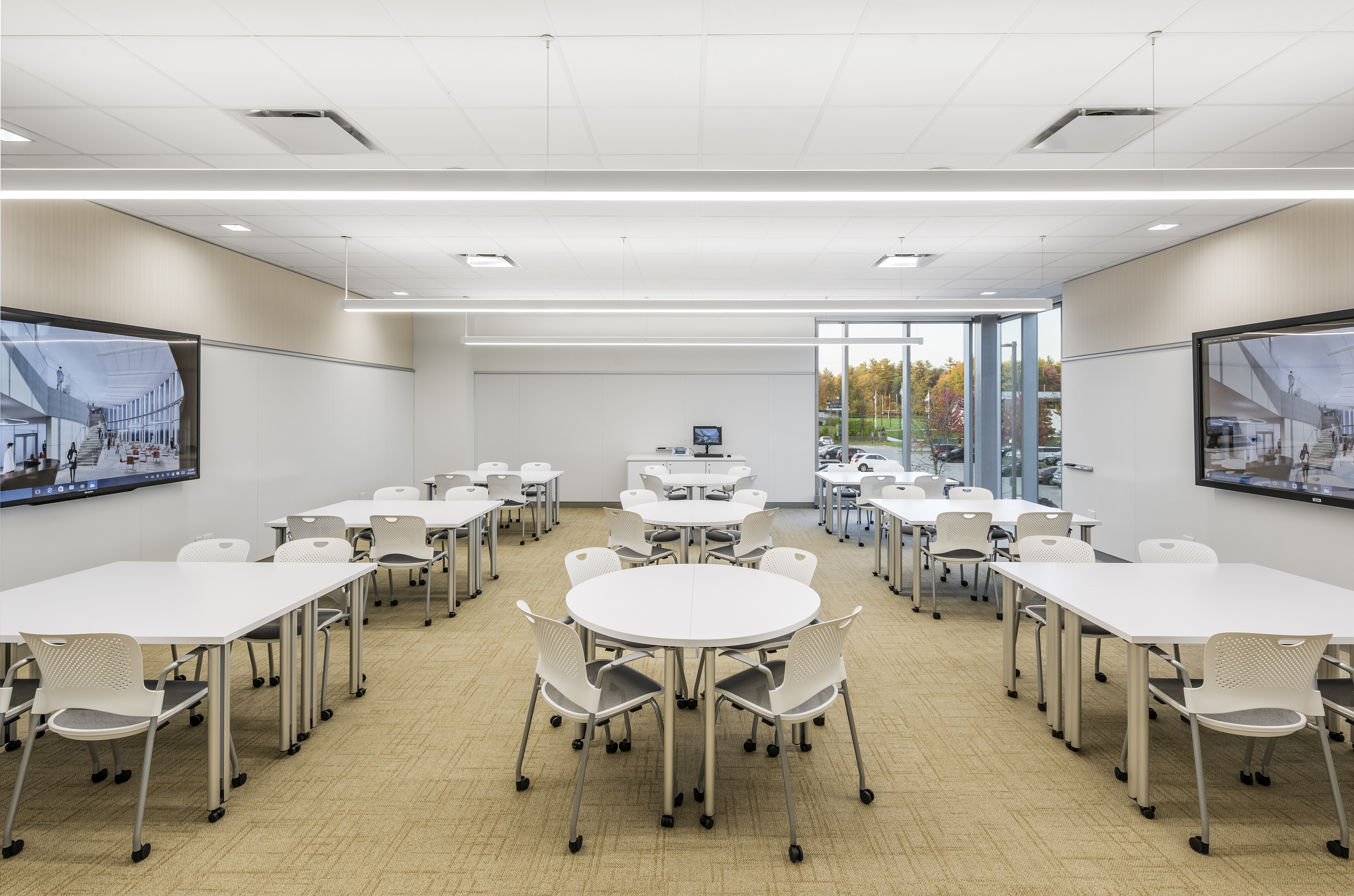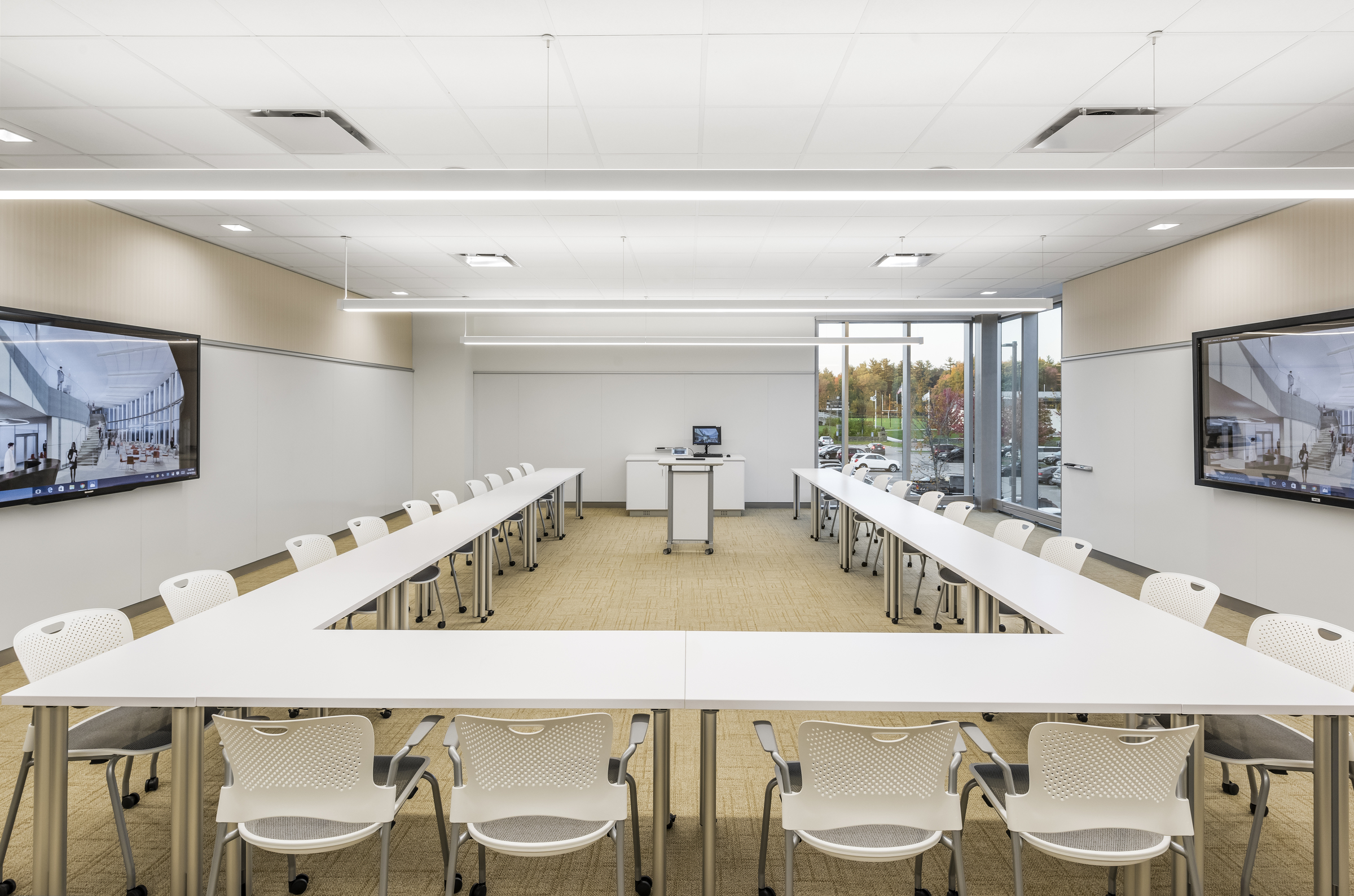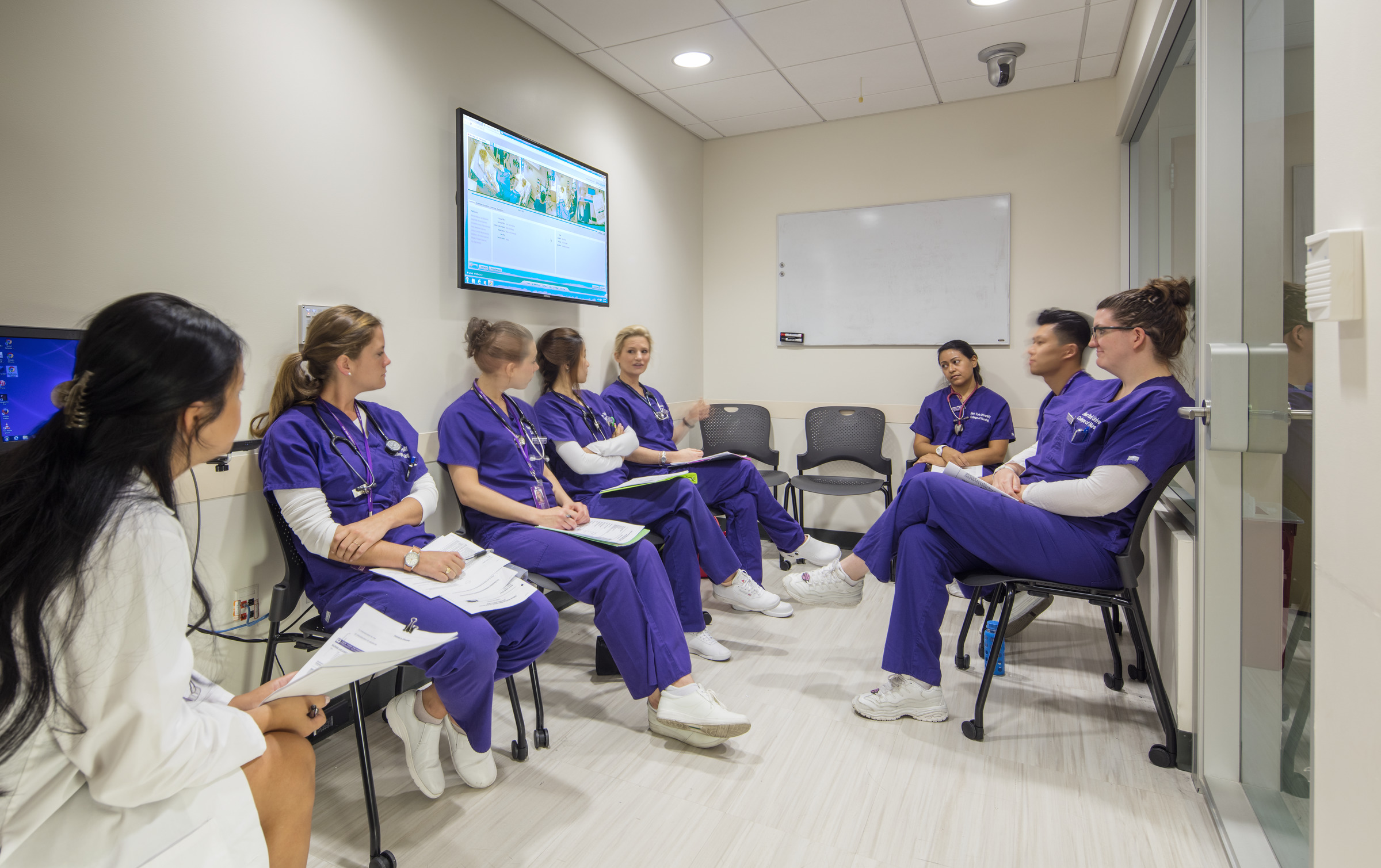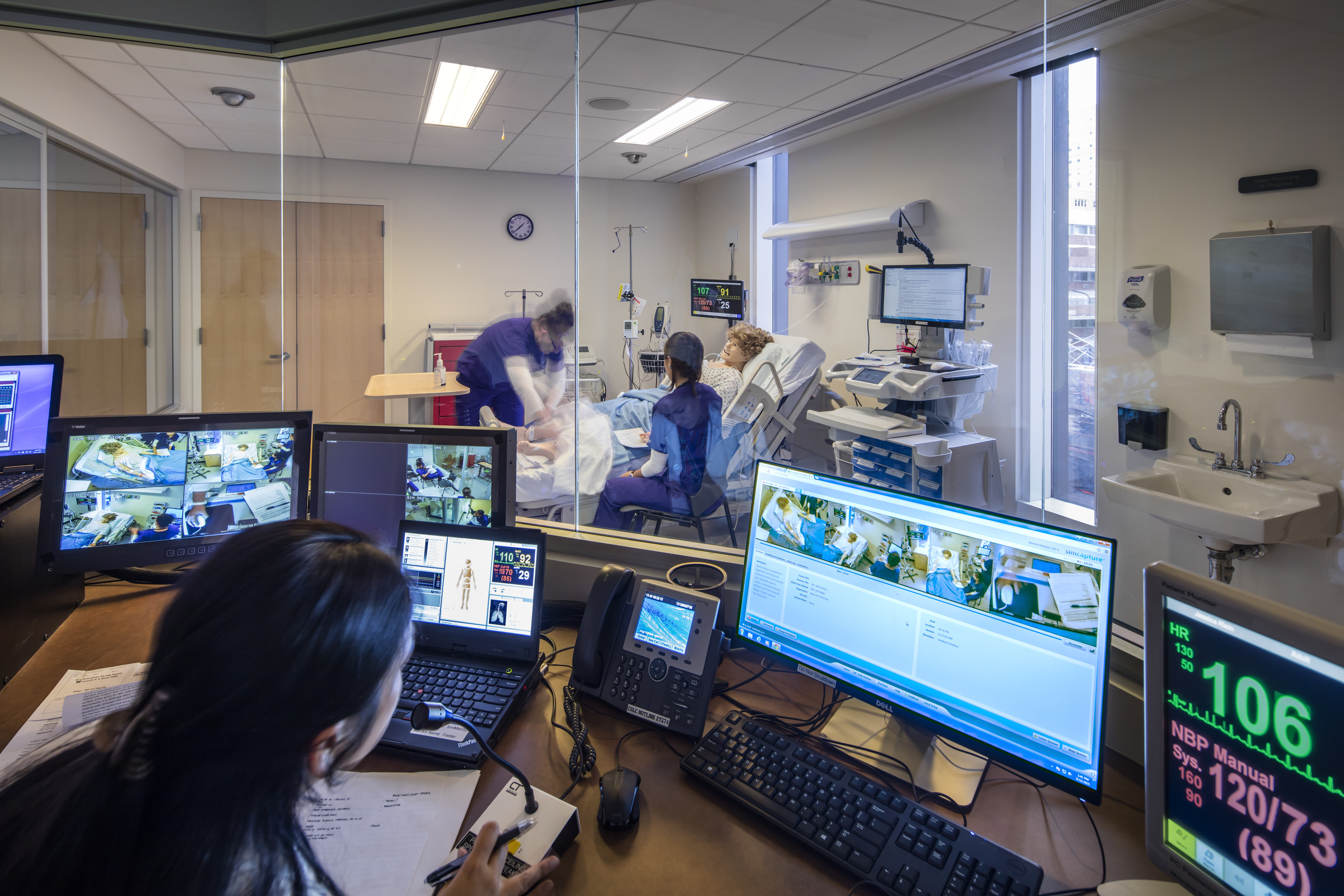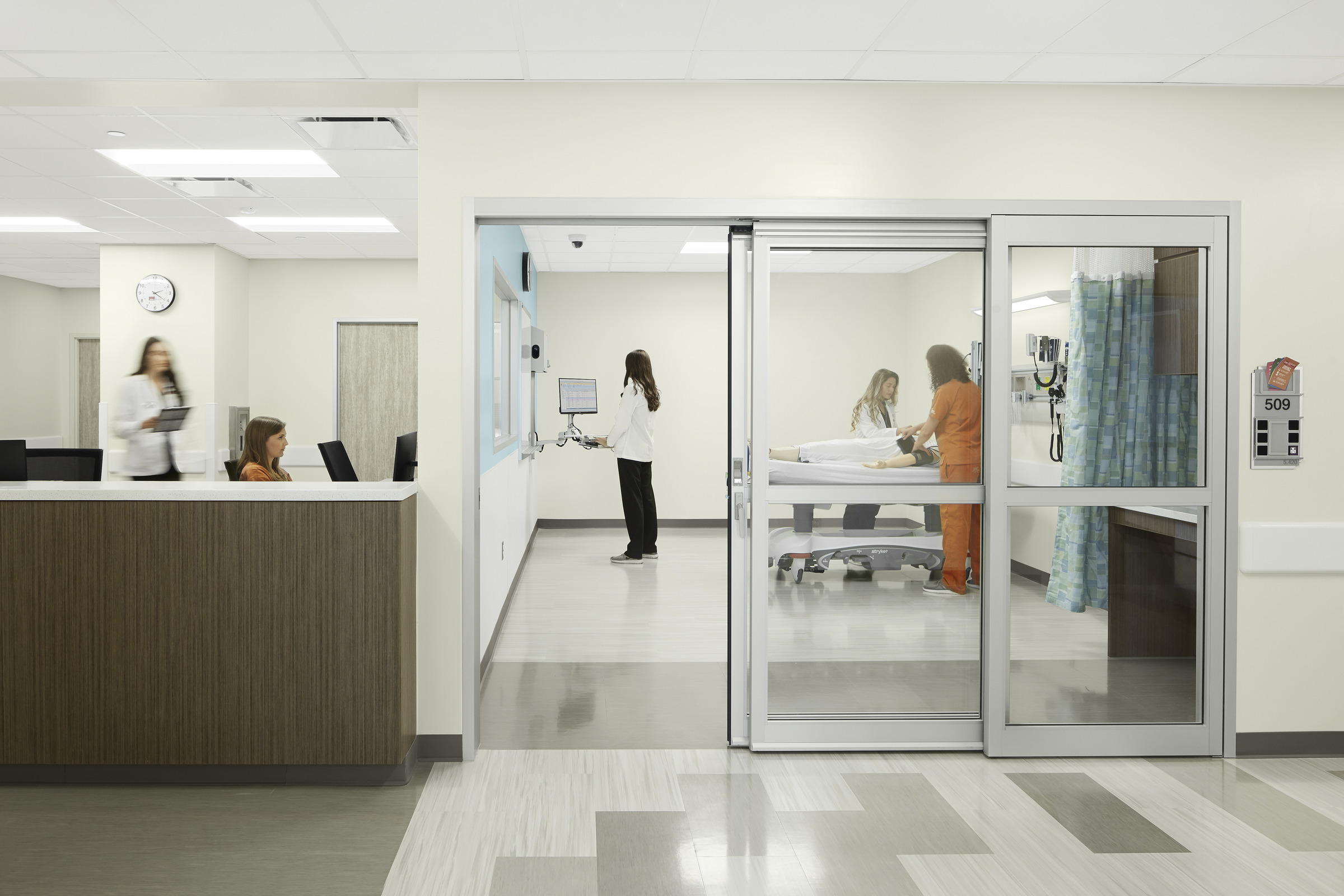
Successful health education programs prepare students for careers in healthcare by providing experiential, collaborative, and team-focused opportunities based in patient-centered care. This multi-disciplinary, hands-on learning can be dramatically enhanced by strategically planning spaces for three discrete types of learning activities: formal, informal, and experiential.
Formal Learning – Classrooms
Health education is experiencing a fundamental shift away from a lecture-based teaching style that emphasizes individual scholarship to one that is more team-oriented in nature, reflecting the needs of today’s clinical practices. Spatial dynamics advance this principle by accommodating a range of pedagogical approaches and room configurations to support more engaged, interactive relationships between educators and students. Some considerations for successful formal learning spaces include the amount of areas allocated per student, the shape of the room to allow multiple layouts with optimal views of teaching materials, and the ability for student teams to comfortably work simultaneously.
.png)
Health educators tell us that more abstract scientific and technical concepts are better understood when applied to specific patient care scenarios. Embracing the trend of shifting pedagogy from traditional to problem-based learning, many of today’s classrooms are provided with resources to learn in multiple modalities in a single course session including lecture, video demonstration, distance collaboration, and small group discussions. Additionally, many institutions are seeking to improve the utilization of their classroom resources by providing flexible furniture and infrastructure that can allow “workhorse” rooms to quickly change format from formal teaching to study and skills training.
The notion of team-based learning takes on particular meaning for health education with the growing demand for interprofessional opportunities for students in a variety of disciplines.
Large team-based learning classrooms can be designed to support a single professional school class at one time, or bring interprofessional groups from medicine and health professions together for their coursework. These spaces are becoming quite large, seating as many as 200 students at a time. Key considerations are the size of the learning group cohorts, the distance between the tables for acoustical separation and to facilitate instructor movement, and the ability to use the room for multiple study groups at one time.
Informal Learning – Study Space
Open spaces for informal meeting or study help both individual departments and interprofessional teams build a sense of cohesion, and have proven to improve overall student performance. Page designs these spaces to reflect institutions’ vision and culture, based on an exploration of the specific social, intellectual, and physical needs of occupants. Some of the specific considerations for health education programs are the emotional demands of providing patient support and the high stakes involved in care. Students require breakout space for relaxation, areas for smaller peer-to-peer and mentoring sessions, connections to each other, and positive distractors such as natural views.
Inclusion of this space allows for important educational opportunities outside of the classroom, and helps promote a sense of community. Our research demonstrates that these spaces are most effective when they are provided at a variety of scales, with natural light, and in convenient proximity to other learning spaces. While some study and collaboration spaces are effectively designed to be destinations for students to gather, others need to support informal, unplanned connections between students and educators.
Many programs benchmark the overall amount of area dedicated for informal collaboration. The proportion of informal learning space has been increasing in higher education projects across the country, and health education is no exception.
Experiential Learning – Simulation
Simulation-based learning enhances health education students’ training by connecting knowledge and skills directly applicable to real-world healthcare environments. Training students in this setting promotes improved collaborative behavior in their approach to clinical care – a cooperative attitude and inclination toward team-based problem solving.
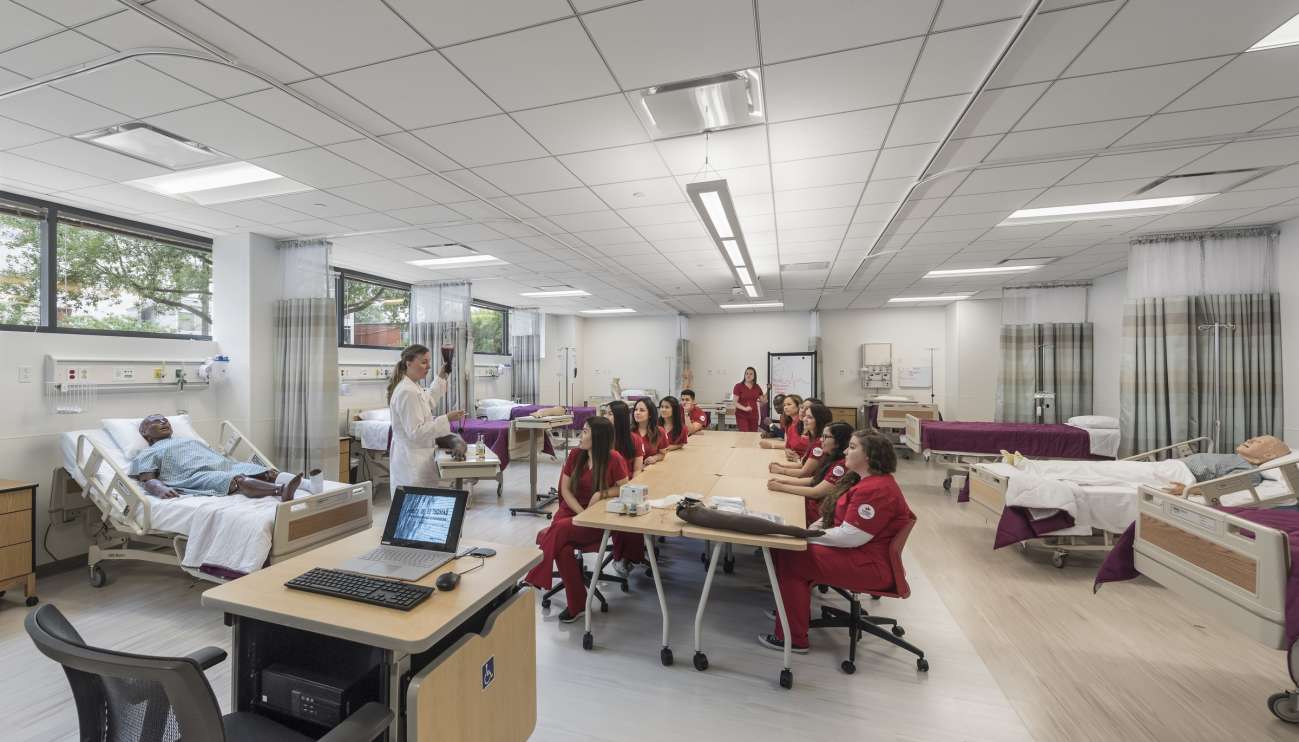
Patient simulation mannequins are often incorporated in spaces easily adaptable to a variety of specialized clinical settings as a safe, effective, way to mimic and amplify real-life medical situations —ensuring physical, contextual, and emotional realism. Increasingly, our clients are requesting more flexible layouts that can support a wide spectrum of simulator fidelity —supporting both novice and experienced healthcare learners. As more schools focus on important interdisciplinary training, Page also recognizes the appropriate accommodation of larger teams translates into a need for increased storage space. Our prior experience demonstrates a wide variety of approaches to simulation, and we work closely with clients to determine their specific institutional and pedagogical needs. For example, many institutions feel that instructors need to directly observe students during simulation from an adjacent space. Others are comfortable relying on technology to capture the action in the room and view the activities remotely, in order to eliminate the viewing window and provide a more realistic immersive environment. These variations have very different space needs and planning implications.
Incorporating key design characteristics of these three distinct typologies not only support “team-based everything,” but can also successfully ease students’ transition from the educational setting to clinical practice.
